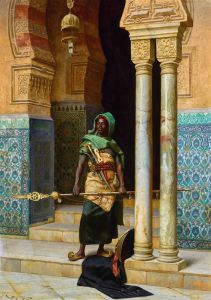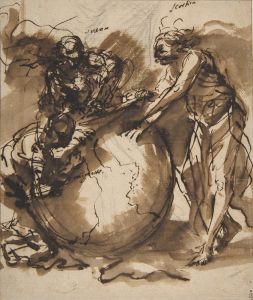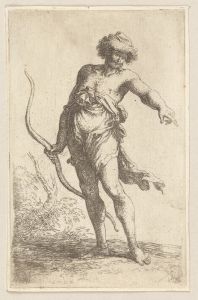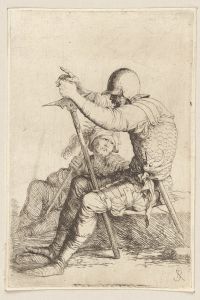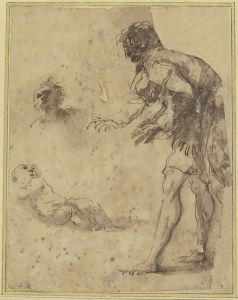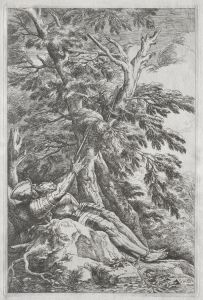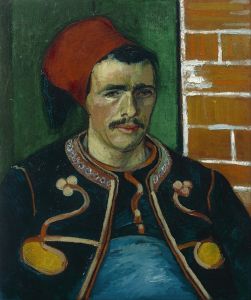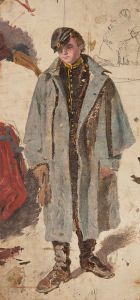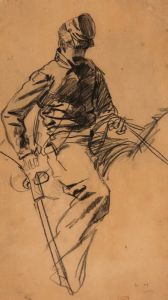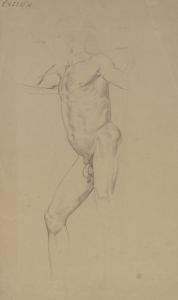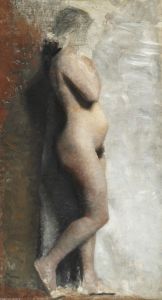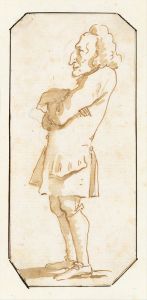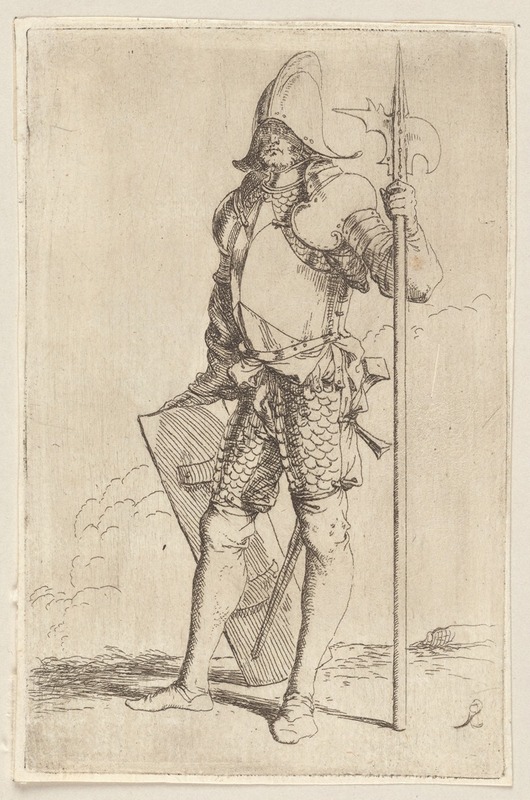
Soldier, Standing, Holding a Cane, Facing Left
A hand-painted replica of Salvator Rosa’s masterpiece Soldier, Standing, Holding a Cane, Facing Left, meticulously crafted by professional artists to capture the true essence of the original. Each piece is created with museum-quality canvas and rare mineral pigments, carefully painted by experienced artists with delicate brushstrokes and rich, layered colors to perfectly recreate the texture of the original artwork. Unlike machine-printed reproductions, this hand-painted version brings the painting to life, infused with the artist’s emotions and skill in every stroke. Whether for personal collection or home decoration, it instantly elevates the artistic atmosphere of any space.
"Soldier, Standing, Holding a Cane, Facing Left" is a painting by the Italian Baroque artist Salvator Rosa. Rosa, born in 1615 in Arenella, near Naples, was a versatile and prolific artist known for his dramatic landscapes, historical paintings, and portraits. He was also a poet, actor, and musician, making him a quintessential Renaissance man. Rosa's work often reflected his rebellious spirit and his disdain for the academic conventions of his time.
The painting "Soldier, Standing, Holding a Cane, Facing Left" is a fine example of Rosa's skill in capturing the human figure with a sense of realism and character. The soldier in the painting is depicted in a relaxed yet alert stance, holding a cane in his right hand. His attire is typical of a 17th-century soldier, with a broad-brimmed hat, a doublet, and breeches. The soldier's face is turned slightly to the left, and his expression is one of calm vigilance, suggesting a readiness for action despite his seemingly casual pose.
Rosa's use of light and shadow in this painting is particularly noteworthy. The chiaroscuro technique, which involves the use of strong contrasts between light and dark, helps to create a sense of depth and volume. The light source appears to come from the left side of the painting, illuminating the soldier's face and upper body while casting shadows on his lower half and the background. This technique not only highlights the soldier's features but also adds a dramatic effect to the overall composition.
The background of the painting is relatively simple, with a dark, indistinct setting that serves to focus the viewer's attention on the soldier. This minimalist approach to the background is typical of Rosa's portrait work, where the emphasis is placed on the subject rather than the surroundings. The lack of detailed background elements also allows the viewer to appreciate the intricate details of the soldier's attire and the texture of the materials.
Salvator Rosa's paintings often contained elements of satire and social commentary, though "Soldier, Standing, Holding a Cane, Facing Left" appears to be more straightforward in its depiction. The painting does not seem to carry any overt political or social messages, focusing instead on the individual character of the soldier. This focus on the individual is a hallmark of Rosa's portraiture, where he sought to capture the essence of his subjects with a blend of realism and artistic interpretation.
Rosa's work was highly influential during his lifetime and continued to be appreciated long after his death in 1673. His ability to convey emotion and character through his paintings earned him a place among the great artists of the Baroque period. "Soldier, Standing, Holding a Cane, Facing Left" is a testament to his talent and his unique approach to art, combining technical skill with a deep understanding of human nature.
In summary, "Soldier, Standing, Holding a Cane, Facing Left" by Salvator Rosa is a striking example of Baroque portraiture, showcasing the artist's mastery of light and shadow, his attention to detail, and his ability to capture the essence of his subjects. The painting remains an important piece in the study of 17th-century Italian art and continues to be admired for its artistic and historical significance.





